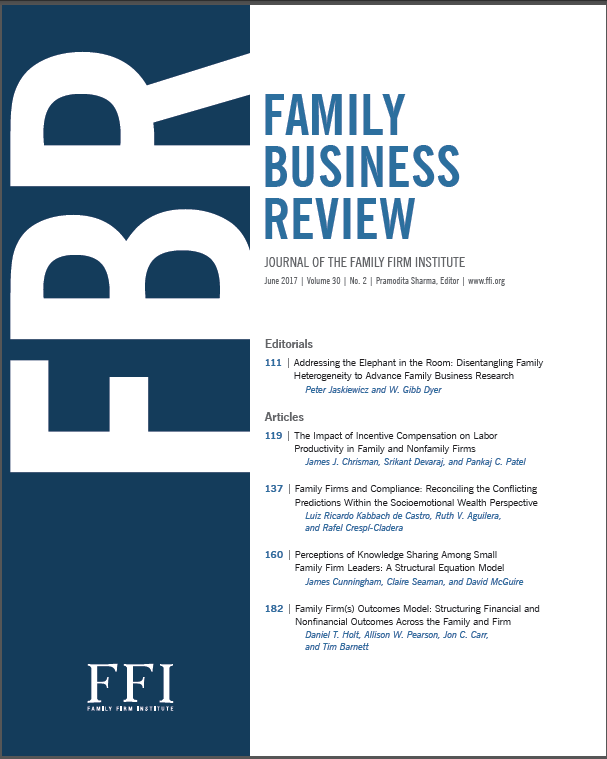捕捉家族企业异质性:分类学和类型学如何帮助该领域向前发展
IF 9.9
1区 管理学
Q1 BUSINESS
引用次数: 71
摘要
随着家族企业领域的不断成熟,人们越来越认识到家族企业之间的异质性程度也就不足为奇了。虽然许多早期的研究都集中在家族企业和非家族企业之间的差异上,但越来越多的研究集中在确定家族企业之间差异的来源和类型上。鉴于人们越来越需要更好地理解家族企业之间的差异,我们提出,配置方法是一个特别有用的视角,可以用来研究集团内部的异质性,该方法通常反映在类型学(概念上发展的)或分类法(凭经验推导的)中。因此,本期“家族企业的类型学和分类学”特刊的目标是:(1)强调使用类型学和分类法在推进家族企业研究中的效用;(2)促进使用这些方法来更好地理解家族企业之间存在的异质性,以及这种异质性如何与重要的组织成果联系起来。考虑到这些目标,本评论对现有家族企业文献中使用类型学或分类学分类来描述家族企业的文章进行了综述。我们的审查为随后介绍特刊所载四篇文章中每一篇的概要奠定了基础。最后,我们讨论了未来使用类型学和分类法进行研究的建议,以及它们在家族企业异质性中的应用。我们首先讨论最常用的方法。本文章由计算机程序翻译,如有差异,请以英文原文为准。
Capturing Family Firm Heterogeneity: How Taxonomies and Typologies Can Help the Field Move Forward
As the field of family business continues to mature, it is not surprising that there is a growing recognition of the degree of heterogeneity among family firms. While many earlier studies focused on differences between family and nonfamily firms, more and more research is centered on identifying the sources and types of variance among family firms. Given the increasing need to better understand differences among family firms, we propose that a configurational approach, which is often reflected in typologies (which are conceptually developed) or taxonomies (which are empirically derived), is a particularly useful perspective to examine within-group heterogeneity. Thus, the goal of this special issue on “Typologies and Taxonomies of Family Business” is to (1) highlight the utility of using typologies and taxonomies in advancing family business research and (2) promote the use of these approaches in fostering a better understanding of the heterogeneity that exists among family firms, and how this heterogeneity might be linked to important organizational outcomes. With these goals in mind, this commentary provides a review of articles in the extant family business literature that have used typologies or taxonomic classifications to describe family businesses. Our review lays the foundation for the subsequent presentation of a synopsis of each of the four articles contained within the special issue. Finally, we conclude with a discussion of suggestions for future research using typologies and taxonomies and their application to family firm heterogeneity. We start by discussing the most common approach used.
求助全文
通过发布文献求助,成功后即可免费获取论文全文。
去求助
来源期刊

Family Business Review
BUSINESS-
CiteScore
12.40
自引率
13.60%
发文量
13
期刊介绍:
Family Business Review (FBR) has been a refereed journal since 1988, serving as the premier scholarly publication dedicated to the study of family-controlled enterprises. It delves into the dynamics of these businesses, encompassing a range of sizes from small to very large. FBR concentrates not only on the entrepreneurial founding generation but also on family enterprises in subsequent generations, including some of the world's oldest companies. The journal also publishes interdisciplinary research covering families of wealth, family foundations, and offices.
 求助内容:
求助内容: 应助结果提醒方式:
应助结果提醒方式:


